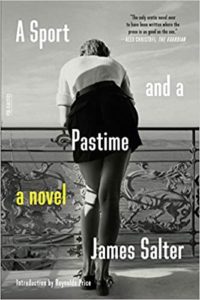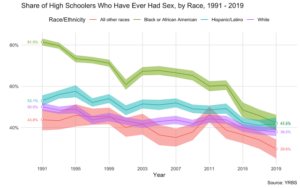China vs. the USA
During his tenure as president, Donald Trump started a trade war with China. He had an argument. China was subsidizing some of its exports to gain market share. We do that, too. But China did it more. So, he imposed duties and sanctions. And China responded with more of its own.
It was good for several US industries. Bad for others. On the whole, it didn’t work. It resulted in widespread shortages of all sorts of essential US needs – from steel to sheet rock to washing machines and microchips. American businesses and consumers began to experience significant cost increases in manufactured goods. At the end of Trump’s term in office, the US economy had gotten smaller, while the Chinese economy had gotten bigger.
The Biden administration isn’t officially continuing the trade war, because it won’t officially continue any policy that Trump initiated. But they are “standing up” to China by leaving some of the worst parts of the trade war in place and picking fights with the Chinese in other areas of exchange. Possibly the worst – and most dangerous – is a promise to stand against China’s claim on Taiwan. Some analysts have suggested that we are on the verge of new Cold War.
Why would Biden’s international decision-makers do that?
Here’s what I think:
Any good marketer will tell you that, next to making great products and providing excellent customer service, the most effective way to build a base of loyal customers – and get them to spend lots of money – is to identify a fear, personify it as a scary monster, and then promote your business or product as the hero they need to defeat it. (Margarine vs. Animal Fat. Apple vs. Complicated. Tesla vs. Fossil Fuels.)
Political parties were playing this game long before Madison Avenue perfected it. But they have taken it to a new level in the digital information age with the ability to instantly test plots and characters for “stickiness,” hire skilled copywriters to compose narratives around the winners, and then flush them out to millions with the click of a send button.
Trump got into the White House by telling the immigration invasion story better than anyone before him. Shocked by his success, Democrats, Moderate Republicans, Big Tech, and the Liberal Media went to work full time trying to oust him, exhuming the decaying corpse of Ravaging, Radical Russia as America’s Adversary #1.
For two years, they did their best to sell the Russian Collusion story, but failed for lack of hard evidence. They continued characterizing Trump as a racist and xenophobe – but that image only enraged the Trump haters. The rest of the voting public didn’t buy it. The BLM/Antifa rioting and looting that tore up virtually every large Democratic-run city last year didn’t win them any converts. Things were looking good for Trump going into the election. But then – like a deus exmachina from a Greek drama – COVID-19 struck and Trump’s response to it gave them a really scary monster that saved the day. Trump was out. Bidden/Harris were in. Democracy was saved.
Or was it?
Trump left the White House with a social mandate every bit as big and powerful as the Biden team had coming in. The interim elections were in doubt. But then the Fates intervened a second time with the pathetic Trump-loving, self-styled patriots’ storming of the Capital with an intensity that seemed naïve. The true believer bought into it, hook, line, and sinker. But the rest of the country gave it short shrift.
Meanwhile, Trump supporters and other conservatives were working their own marketing game, showing nightly clips of the surge of violent, Black-on Black crime that was accelerating in the big cities and the tens of thousands of illegal immigrants that were pouring across the southern border, being processed and released, and then shipped out to destinations undisclosed all over America. A million have crossed already and a million more will be here, at this rate, by the end of the year.
The conservative story was getting scarier by the actual facts. But the liberal story was losing steam by the actual facts, too. Police killings of unarmed African-Americans was being seen for what it is – a small problem compared to the 1000-times larger problem of Blacks killing Blacks. Not that liberals ever cared about that anyway.
The threat of Russia was being understood for what it was – an absurdity compared to the threat of Islamic terrorism. Putin’s Scary Meter was in decline. Even the Dems’ most loyal legions could not quite believe that Putin’s main goal was to destroy US democracy.
On top of that, the entire US population – Red and Blue – was growing tired of the Scary COVID Monster and the lockdown that was being pushed by Democratic leaders and hailed by the NYT and CNN.
Looking back at it now, liberal political analysts could see that although their big goal – dethroning the Orange-Topped Ogre – had been achieved, they had done little to offset the threat of losing badly in 2022. In accomplishing Trump’s defeat, they had also, inadvertently, desensitized the entire population to living in fear generally, and especially to government- and media-hyped fear mongering.
And that, for a new administration hoping to push the largest social spending agenda in the history of the world, was a Big Problem.
I’m sure there were all sorts of internal debates about how to accomplish that. But in the end, whoever it is that makes political decisions for Biden persuaded him that a bigger Scary Monster was needed. Bigger than Putin. Bigger than Russia. And certainly bigger than domestic terrorism, which was, for all intents and purposes, DOA.
Rather than invent something entirely new, they opted for a Hollywood solution. They would continue to push on the domestic terrorism story, but more as a distraction while they patched together a new Scariest-Ever Monster. It had to be huge – much bigger than little old Russia. And what could be bigger than the biggest country in the world… China?
Yes, China was Trump’s Monster. But for Trump and his followers, it was a relatively little monster. It was all about unfair trade practices, The new monster was to be a Frankenstein creation of the little head of Rabid, Rapacious Russia on the colossally big body of Cheerless, Cheating China.
And as an added bonus, China came with a Big, Scary Monster Dog. As the least cooperative, most rabid consumer of fossil fuels on the globe, a Cold War on China would appeal to proponents of the Green New Deal.
It was an unlikely invention. But it had the advantage of pandering to the fan base of Trump haters (by attacking Russia), Trump lovers (by attacking China), and eco-friendly voters to boot. And as H.L. Mencken famously said, “No one in this world, as far as I know, has ever lost money by underestimating the intelligence of the American people.”
So it could work. If promoted skillfully, it could succeed in getting the votes the Dems need to pass all or at least some of the multitrillion-dollar spending bills they had already written before the election. And maintain or even increase their control of both houses of Congress.
And that is why, IMHO, the Biden/Harris team is starting to push against China. You can disagree with it, but what you can’t do is ignore the question of how smart it would be for the US to get into a coldish economic and political war with China.
Could we afford it? Could we win it? Could we even come close?
Putting aside the fact that the US has not won a single war in the past 50 years – including the Vietnam War, the War Against Terrorism, the War Against Drugs, and the War Against Poverty – could we actually win a Cold War against China and Russia at the same time?
Let’s look at some facts as they relate to China:
10 Ways China Is Beating the US Economically
- China is no longer the minor economy it was 30 years ago that can be ignored or pushed around. In fact, it is theworld’s second-largest economy when measured by nominal GDP, and the world’s largest economywhen measured by Purchasing Power Parity (PPP), which, according to some, is a more accurate measure of an economy’s size.
- In the past 10 years, China has made huge capital investments in its economy and has seen rapid productivity growth. Click here.
- The US economy depends on Chinese products. We are its biggest customer. Click here.
- China is increasingly dominating the global technology industry. Click here.
- China’s infrastructure is far ahead of the US. Click here.
- China knows how to make and sell things more cheaply than the US can. Click here.
- China knows how to build things faster than we can in the US. Example: A 57-story skyscraper was built in 19 days, and the San Yuan Bridge in Beijing was taken down and rebuilt in 43 hours. In contrast, the US has a major problem with gridlock. Click here.
- Chinese millennials are incredibly entrepreneurial. Click here.
- In terms of day-to-day quality of life, there are some things that are world-class in China – possibly better than they are in the US. Harrison Jacobs recently spent 6 weeks in China and identified 5 things that he says the Chinese do “infinitely better” than we do. Click here.
- And if all this were not enough, China has the second-largest military in the world and is leading the world on electronic surveillance of its citizens.
When I look at my crystal ball, the picture is pretty clear. The US, the world’s economic and political heavyweight for the last 100 years, is in political and social disarray. Its economy is bankrupt. It hasn’t had a positive balance of trade in decades. It’s $40 trillion in debt and yet is spending money faster now than ever in its history.
Its sense of identity has been balkanized into dozens of warring cultures, while its governing classes, from both sides of the aisle, have lost any interest in working towards the common good.
Meanwhile, China has a massive military and a part-centralized, part-free-market economy that, for the moment, is outpacing the US in almost every economic category.
Based on the above, I can’t see how getting into a cold-war-like shit-throwing contest with China makes any sense for the US. What do you think?





